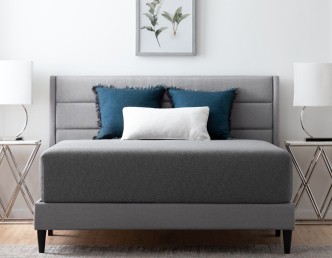Memory foam’s popularity has skyrocketed over the years due to its numerous advantages. Pressure points can be relieved, sore muscles can relax, and sleep quality can improve with a memory foam mattress. You may get one quickly and easily because many stores now offer home delivery.
However, some factors should be considered when buying memory foam mattresses.
Factors To Consider When Buying Memory Foam Mattresses
Memory materials can be firm, and the most lavish of them can provide an excellent night’s sleep. Stay with us and read our comprehensive buyer’s guide to memory foam beds to learn everything you need to know.
Pricing
A dollar saved is earned, so it’s wise to set a spending limit before hitting the stores. After you’ve done your homework, compare the prices of other manufacturers that provide comparable models to get the ideal one for your needs. You can also save money by checking out sales and coupons, which pop up around the holidays for specific brands.
Time for Adaptation
The majority of businesses will provide you with a free trial. There’s a wide variety of durations, from one month to a full year. Buyers should take advantage of this window of opportunity and give themselves enough time to return an item before giving up.
It takes time for a mattress to “break-in,” and it also takes time for a person’s body to acclimatize to a new bed. If clients give themselves at least 30–40 days to break in their mattress, they reduce the likelihood that they will need to return it and deal with the associated headache.
Variable Layer Density
The higher the concentration of tiny foam cells, the more buoyant the memory foam mattresses should be. More foam cells should mean the material stays put relatively slowly under load. The higher the density rating of a foam layer, the better the quality and longevity of the foam.
Memory foam densities range from about 3 to 7 pounds, with the heavier varieties representing the highest quality options. Viscoelastic foams weighing 5 or 6 pounds are often reasonable, but customers should be careful of anything below that.
Thickness
To a large extent, the comfort of your bed will depend on the thickness of the tempered foam used in making it. More pressure could be relieved with thicker foam, but support could be lost.
The typical thickness of a layer of memory foam is between 2 and 4 inches. In general, denser foams are better at providing support.
Foam with a thickness of only 1 or 2 inches would be a welcome addition to coils or other primary material. Two foams of different densities are often layered on top of one other.
Longevity
This was briefly discussed in the density section but merits further explanation. Consumers are looking for beds that will last for many years. While the density of memory foam is one factor in determining how long it is supposed to last, a customer should also consider the warranty offered by the manufacturer.
Mattress Firmness
The level of firmness is a personal preference that can vary significantly from person to person. Typically, mattresses are labeled as a soft, medium, firm, or a variation thereof (extra plush, plush, or luxury firm).
Firmer beds offer additional support, preventing sleepers from sinking too deeply into the surface. Lighter memory foam mattresses are suitable for sleeping well on a softer bed without sinking too deeply due to all the layers.
